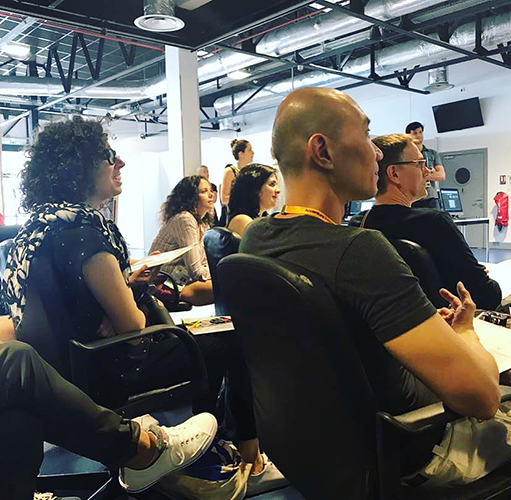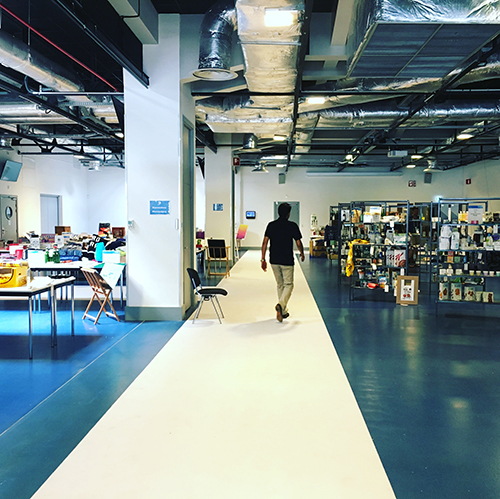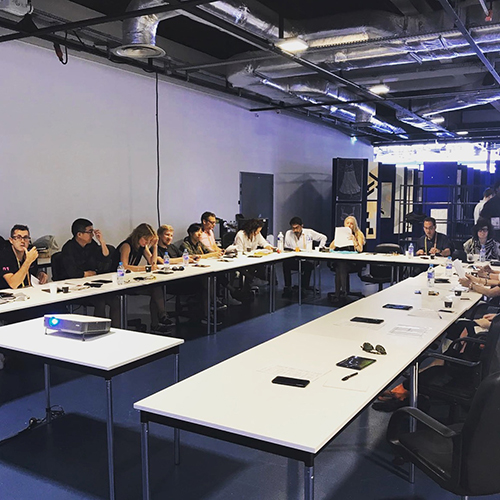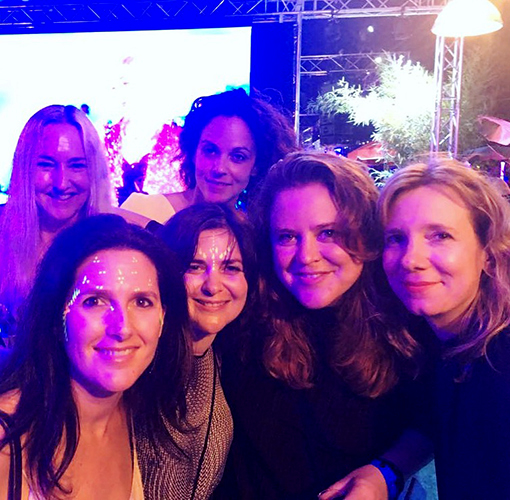The Diversity Effect: A Cannes Diary
Marta Swannie was born in Denmark and raised in Canada. She studied at the Cooper Union and moved to London in the late 90s as a digital designer. Over the years, Marta has created digital identities, communications, experiences, and products for some of the world's most exciting brands, including PlayStation, Red Bull, Orange, Tate, National Gallery, Jaguar Land Rover, and Vodafone.
She was creative director at a number of agencies before founding her own digital design studio, and raising VC for her art-on-demand retail platform, "MemoryPrints'.
Marta joined Brand Union in 2015. Her work has been recognised by BAFTA, D&AD, BIMA, FWA, Adobe Max, European Design Awards, and more…
When Cannes Lions announced that 43% of the festival judges were women this year, up from a lowly 28.5% in 2014, 31.5% in 2015 and 40% just last year, I took notice. Not just because of the broader industry implications, but (more selfishly) because I am a member of that 43%—one of the several women on the Cannes Lions Design Jury.

It’s not that I’m new to being outnumbered in these situations. I come from a digital background, so I’ve grown accustomed to male-dominated workplaces and juries. That’s why the idea that Cannes might finally be on its way to a more natural 50/50 gender split was intriguing.
Yes, the festival has a long way to go in increasing ethnic diversity, but I wondered how this initial fundamental gender change might be reflected in the judging process and overall festival experience. So, I kept a diary of key moments in my personal jury experience and, in doing so, I discovered the victories that can be gained when these major institutions make concerted efforts to meet the expectations of a more gender-diverse industry.
Dress Codes & Baby Bonding - Wednesday, June 14th
I arrive to a very hot and humid Cannes. Everything feels very organised, with a representative at the airport to meet the judges and drive us to our hotels. In my car are two other women and we get chatting straight away about jurying, children, festival dress codes (what exactly does ‘smart casual’ mean for women?) and how many pairs of shoes we brought with us. That’s a contest I win.
After I’m dropped off at my hotel, I realize that the men and women stick to separate groups. This is self-segregation, not intentional by the show. In fact, at the jury welcome drinks, some of the festival organisers try to mix us up, making jokes about the men vs. women dynamic. As I think about it more, I realize that the groups just naturally formed with the mothers breaking the ice over common personal themes, like children and childcare.
Still, as that first day come to an end, childcare arrangements are obviously the moms’ biggest concern. I’ve given my partner £1k to cover any emergencies while I’m gone but I’m still wondering whether he’ll get our daughter to school on time and if she’ll eat any vegetables over the next ten days.
Fighting Gender Bias - Thursday, June 15th

The first day of judging begins early. We are met by an awards manager who escorts us to our judging room. In the jury room, we are met by Cannes Managing Director, Jose Papa, who cuts right to the chase with a serious speech about objectification.
He explains that this year, a new guideline has launched concerning gender representation in creativity. We are asked to consider if a piece of work objectifies, perpetuates negative and harmful inequalities and/or gender bias and are given criteria based on empathy. We should use our hearts and minds to determine if the pieces are acceptable.
He asks, would we accept the piece it is was our daughter, son, sister, father, or mother portrayed? As the jury breaks, it is clear that this will be a theme which resonates throughout the festival.
Now the judging begins.
A Moment of Discomfort - Saturday, June 17th

I wake up with swollen, bloodshot eyes. Looking at so much work on screen is taking its toll. As I head back to judge more work, I’m fantasizing about ice masks and interchangeable eyeballs.
Today, for the first time, I note two pieces of work that are bothering me from a gender perspective. One is so outrageous, I wonder how it even made it onto the longlist. The other piece is beautiful to look at, but the concept itself is patronizing. It does feel like these are anomalies though. The judging guidelines may have changed, the rules for submissions have not.
Once I finish, I Skype home and finally manage to talk to my daughter. She kisses the screen over and over. It makes me miss her even more, but at least she sounds happy. I doubt she’s eaten any vegetables.
Striking a Chord - Sunday, June 18th

I start to notice interesting trends in the subject matter. For example. there are several great pieces from India concerning hygiene for children.
There is also powerful work around FGM, violence against women and empowering girls. As the days go on, it gets harder to look at this work because it strikes such an emotional chord. Some of the case films can make you want to weep. I wonder if everyone on the jury feels the same? It could be that I’m just tired and more susceptible, but I suspect there’s an inner activist in all of us.
The Diversity of Voices - Monday, June 19th
I wake to the news of the London terrorist attack in Finsbury Park and worry about home.
I’m distracted but remain excited since today is the first day we get to debate work together. I note there are a few strong characters in the room who dominate and I wonder if I am one of them. It’s a fairly even gender split though, with the men and women speaking an equal amount. However, the process is a little unfair to jurors who are not native English speakers and it shows—they are much quieter. At lunch time, I chat with the Jury president about this, and we decide we’re going to encourage them to speak up, particularly with work from their respective countries.
While debating the work, it’s good to see how many men fully support the entries around female issues – whether it be FGM, violence against women, or empowering girls. It’s also fascinating to get opinions from a local perspective on the entries. In many cases, there’s work from Japan and China that I found very strong on concept and execution, but once explained from a cultural perspective, it put them into a completely new light (for better or worse).
At night we go to the official opening of the festival and as we go from party to party, I realize that avoiding the queues with our VIP badge is the best part. Tomorrow we’ll choose which entries will receive medals and the final Grand Prix winner, but for now, the parties are flowing with food and drink. We dance, take silly selfies, stick our toes in the sea and it feels like we are all making friends for life.

It's great to feel like things are moving forwards at Cannes in terms of gender equality. But I can't help but wonder whether this is just a bubble. There's more work to be done in the "real world" for sure, but at least with this year’s Cannes, we’re off to a good start.




